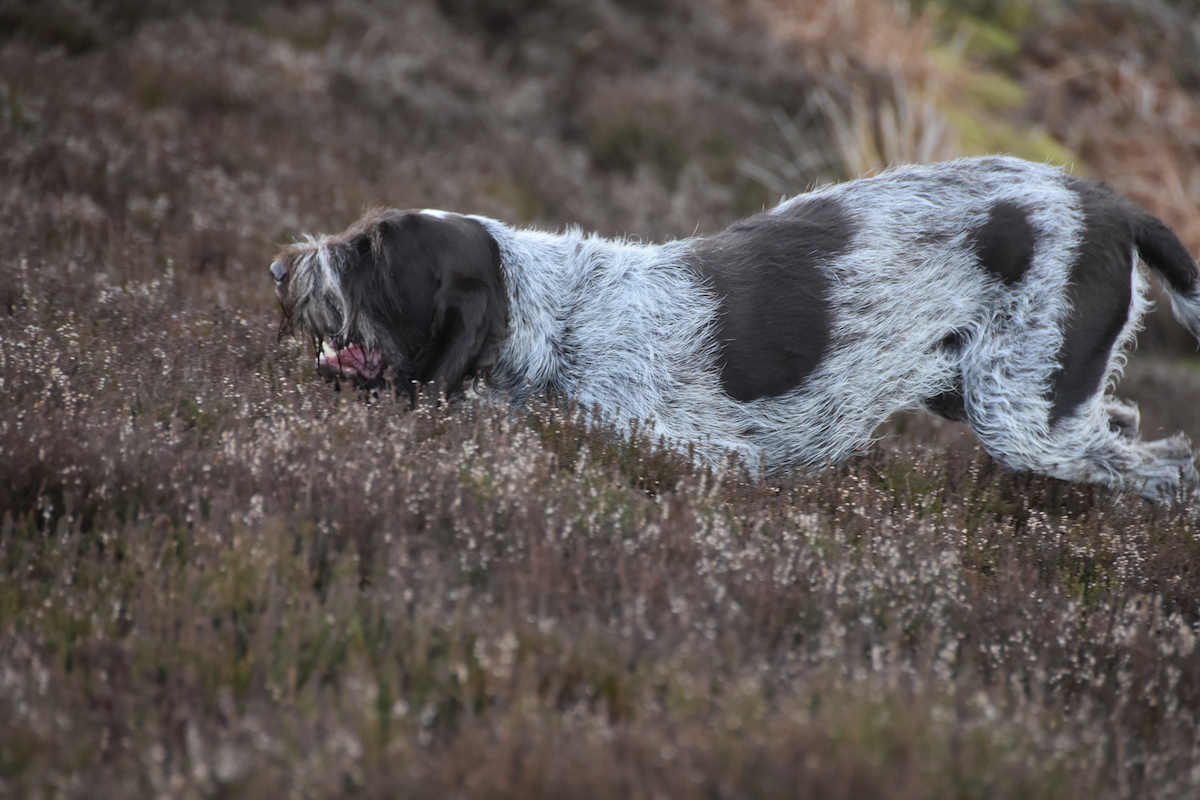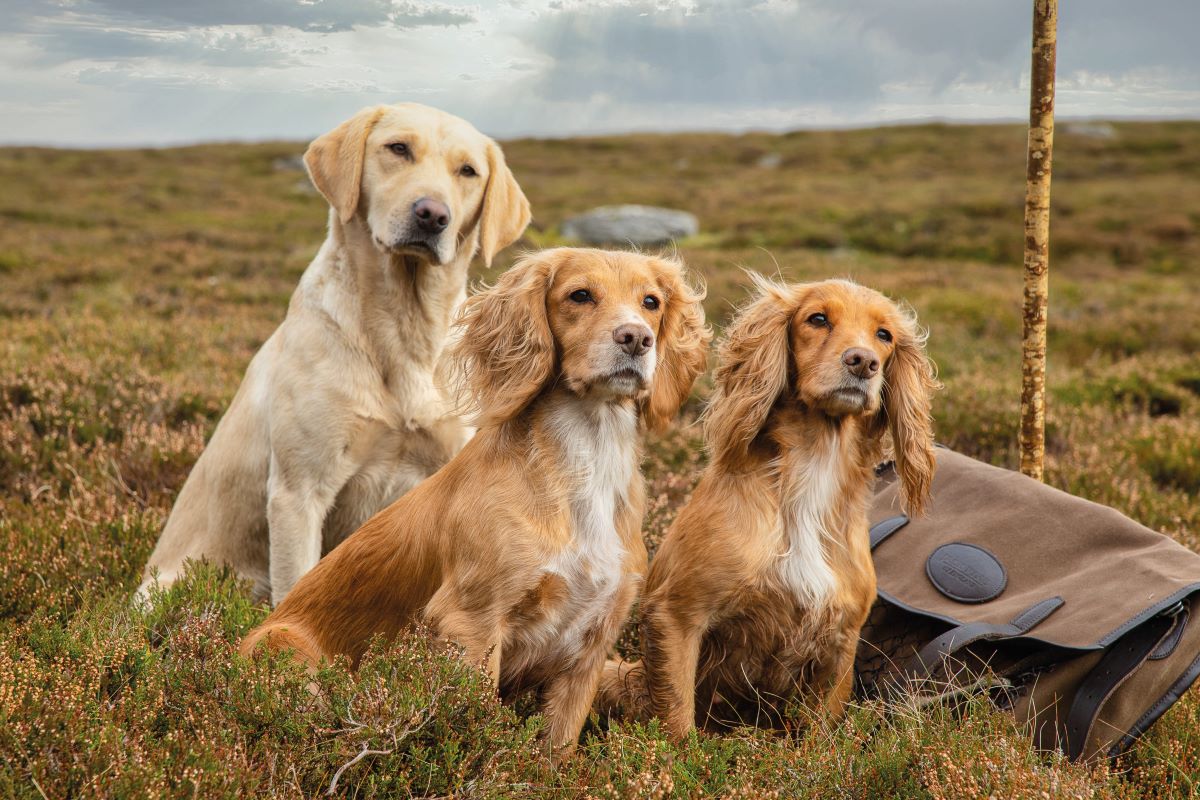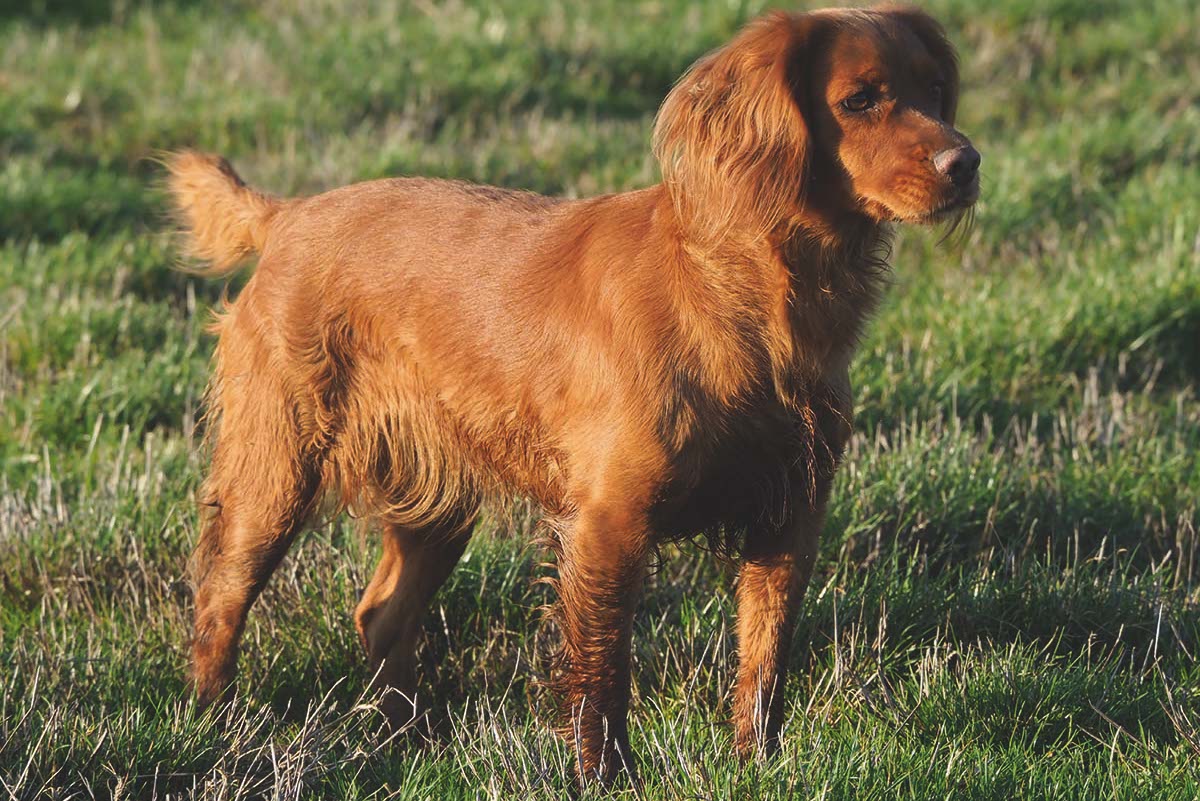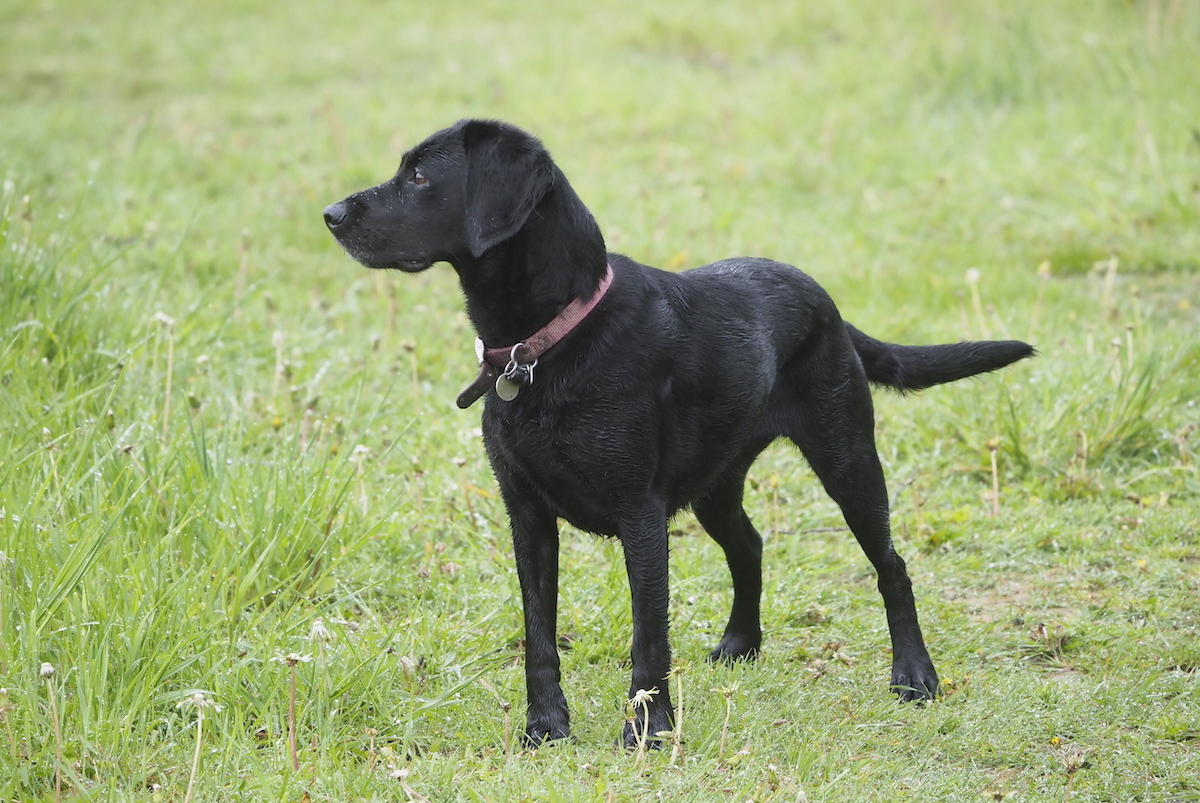HPR breeds: gundogs with a touch of pure class
HPR breeds can be a real boon in the field, but which one is best suited to you and your lifestyle? Ellena Swift looks at the options

An Italian spinone
One of the areas of gundog work commonly overlooked — or that is perhaps not as high-profile as the retrievers and spaniels — involves the HPR breeds. These amazing hunt, point, retrieve dogs are designed to combine the work of a spaniel and a labrador, with the added bonus of pointing. There is certainly a huge gap in the world of gundogs that these breeds fill enthusiastically, as they are hugely versatile, driven, intelligent and athletic. (Read our list of the best slip leads for working dogs.)

A hunt, point, retrieve (HPR) gundog must perform many tasks in the field – some are easier to train and live with than others
HPR breeds not pets
Sadly though, the roles I am often engaged in training them in are rarely the ones these dogs were intended for. The vast majority of HPR breeds that I am asked for assistance with have been bought with the sole intention of being a pet. But unless clients intend to work them, I would rarely recommend any HPR breed as a pet — their instincts run strong through most lines.
For those that do intend to work their dog, there are many options as to which variety to choose. So how do you know which one? The most common of the HPR breeds I see is the German pointer. This breed was first imported to Britain shortly after World War II and, while they are truly the most beautiful dog to look at, they arrived to mixed opinions.
“Some regarded them as a terrific addition to the limited variety of gundogs then available to British sportsmen, while others viewed them with a combination of healthy scepticism and suspicion that their abilities had much been embroidered,” explains our resident gundog expert David Tomlinson.
Today, some 70 years later, more than a dozen breeds are firmly established in the UK. “They have established a widespread following with their varied talents widely appreciated by shooters, falconers and deerstalkers,” David adds. “For a dog to hunt, point and retrieve is a formidable undertaking and it’s true that many are better at hunting and pointing than retrieving, while hard mouths have long been something of a problem.”

German pointers, including the wirehaired are viewed by many as the pinnacle of the HPR breeds
In the rough
Most commonly HPRs are used for rough shooting. Their ability to hold on point means that the Gun can get into a suitable position to shoot the quarry once flushed on command by the dog.
The German shorthaired pointer originated in Germany (as you may have gathered) where the hunting areas were a mix of dense forests with open fields and contained many varieties of game. It was an attempt to breed a dog that could effectively hunt all types of game in all the different terrains. They typically hunted on foot so the natural ability and discipline to point meant the hunter had plenty of time to close in.
They also needed to be big and powerful enough to retrieve fallen game and track much larger game such as foxes, deer and wild cats. In my opinion the German pointers are the pinnacle of the HPR breeds. They are not suitable for a novice handler or for the faint hearted. The vast majority still maintain so much instinct and prey drive, they need careful and specific training.
The Weimaraner is closely related to the German pointer and also originated from Germany, sharing a common ancestry. They take their name from the Grand Duke of Weimar and were once the preferred breed of nobility on the hunting field to track down large prey. This means that they can be difficult to adapt to a different life other than that of a working gundog. They have a high prey drive and do not adapt easily to other walks of life. For anyone wishing to do a lot of rough shooting, perhaps beating or even picking-up, either of the above breeds would thrive.

Hungarian wirehaired vizslas make excellent all-round gundogs
Back to nature
Hungarian vizsla history can be traced back easily to the 1800s and the word vizsla means pointer in English. Initially, they were used to hunt big game such as deer, wild boar and bears. Researchers believe that both the Transylvanian hounds and Turkish yellow dogs are vizsla ancestors. Now more commonly these dogs are used for picking-up and rough shooting. I have a lot more of this breed attend general gundog lessons and I feel they make a better dog for the more novice owner. Sam Carlisle is one such novice, having recently bought his first Hungarian vizsla, Merlin. “They are incredibly charismatic and what is incredible is watching them cover grounds so quickly and so intently and then slamming on the brakes when they do go on point. It really is a spectacle to behold,” he said.
“It is also an incredibly different type of shooting when working with an HPR. It is more hunting than just shooting — it’s working intensely alongside nature. There is something completely natural about it that you don’t get with walked-up or driven shooting. While dogs may flush or retrieve, the pointing aspect reminds me more of falconry.
“You are there at the shoot to work over the dogs, rather than the dogs being there to aid you, as is the case with many other types of shooting,” Sam explains.
Adam Snare of Meare Castle Gundogs agrees that the HPR gundog variety is designed to work in harmony with the handler. He believes the English pointer (closely followed by the German) is the ultimate machine for hunting and explained that, when hunting alongside an English pointer, his lovely vizsla was very much ‘outdogged’ in terms of power, speed and agility covering tough terrain. He also agreed with me that these dogs are not meant to be pets. However, given the right training and plenty of physical and mental stimulation they can be the perfect all-round dog.
While Hungarian vizslas are still highly driven and certainly have prey drive, they are slightly easier to adapt to different roles and in my experience are a little more forgiving during training. They in general seem to adapt well to picking-up and can hold their own with retriever breeds. Their temperaments tend to be very sound and they have been described as ‘Velcro dogs’ — they enjoy companionship and do not do well being left for prolonged periods. So if your choice is to do more picking-up and have a family companion as well, these are a good choice.

It’s small in stature bu tthe Brittany spaniel more than makes up for its size with easy-going energy
The Brittany is a smaller dog than some of the others, but what they lack in size they make up for in energy. They are designed to hunt closer to their handler than the vizsla and pointers. They are renowned for being slightly softer in personality, meaning they can be easy to handle for a novice handler. They work in a very similar way to a pointer, just in a smaller area. They would be an ideal breed for those wishing to work a dog in the beating line. Being slightly smaller as well means they are a much easier dog to deal with in terms of space, travelling and a living situation. They are a high energy dog with a good temperament and can make a good family companion as well as a working dog.
The large Munsterlander is another breed that originated in Germany. They are big dogs with dense coats, so they are well suited to hunting cover. Their ancestors were the German longhaired pointer, so they share a lot of traits with them. They were not recognised by the UK Kennel Club until 2006 and so are still a relatively new breed. I have seen them working in the field and they have high prey drive but remain biddable and are real characters. Again, not a breed I would recommend for a novice handler.
Latin all-rounder
The Italian spinone has possibly the most wonderful face and character of all the HPRs. They are described as having a ‘human’ face with their beard and moustache. They have fantastic temperaments and make wonderful family pets as long as their working needs are met. They are known for being very loyal and enjoy water work. They can make wonderful beating dogs and despite being lively puppies, they often settle into well-rounded and balanced working adults.
None of the HPR breeds can be overlooked, however, knowing the role you’d like them to play and your experience as a trainer can help decide. A good line of pedigree working HPR will set you back around £1,200, although some prices have risen since the pandemic.
A good place to see HPR gundogs working and get to appreciate their characters is at the Kennel Club’s annual Hunt, Point and Retrieve Championship, which this year takes place on 10 and 11 November on the Ampton Estate, Suffolk.
European Roots
There are various breeds included in the HPR sub-group including:
- German shorthaired pointer
- German longhaired pointer
- German wirehaired pointer
- Weimaraner
- Hungarian vizsla
- Hungarian wirehaired vizsla
- Brittany
- Large Munsterlander
- Italian spinone
- Bracco Italiano
- Korthals griffon
- Slovakian rough-haired pointer








